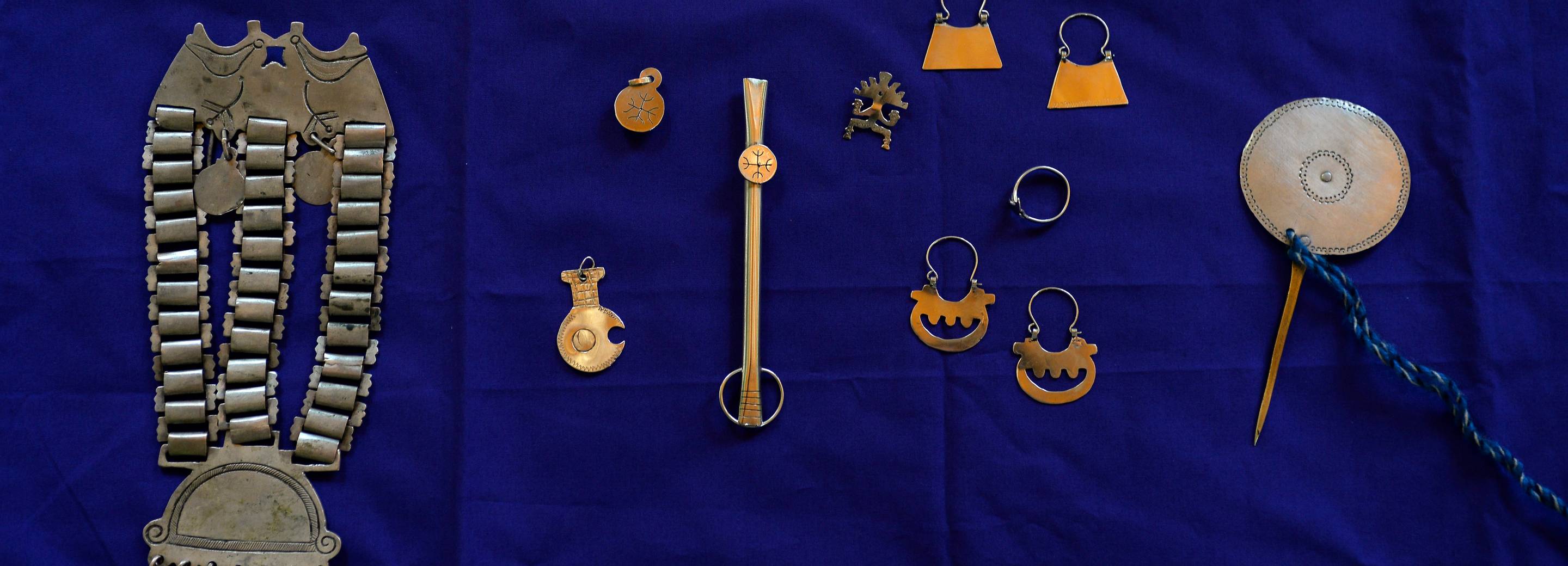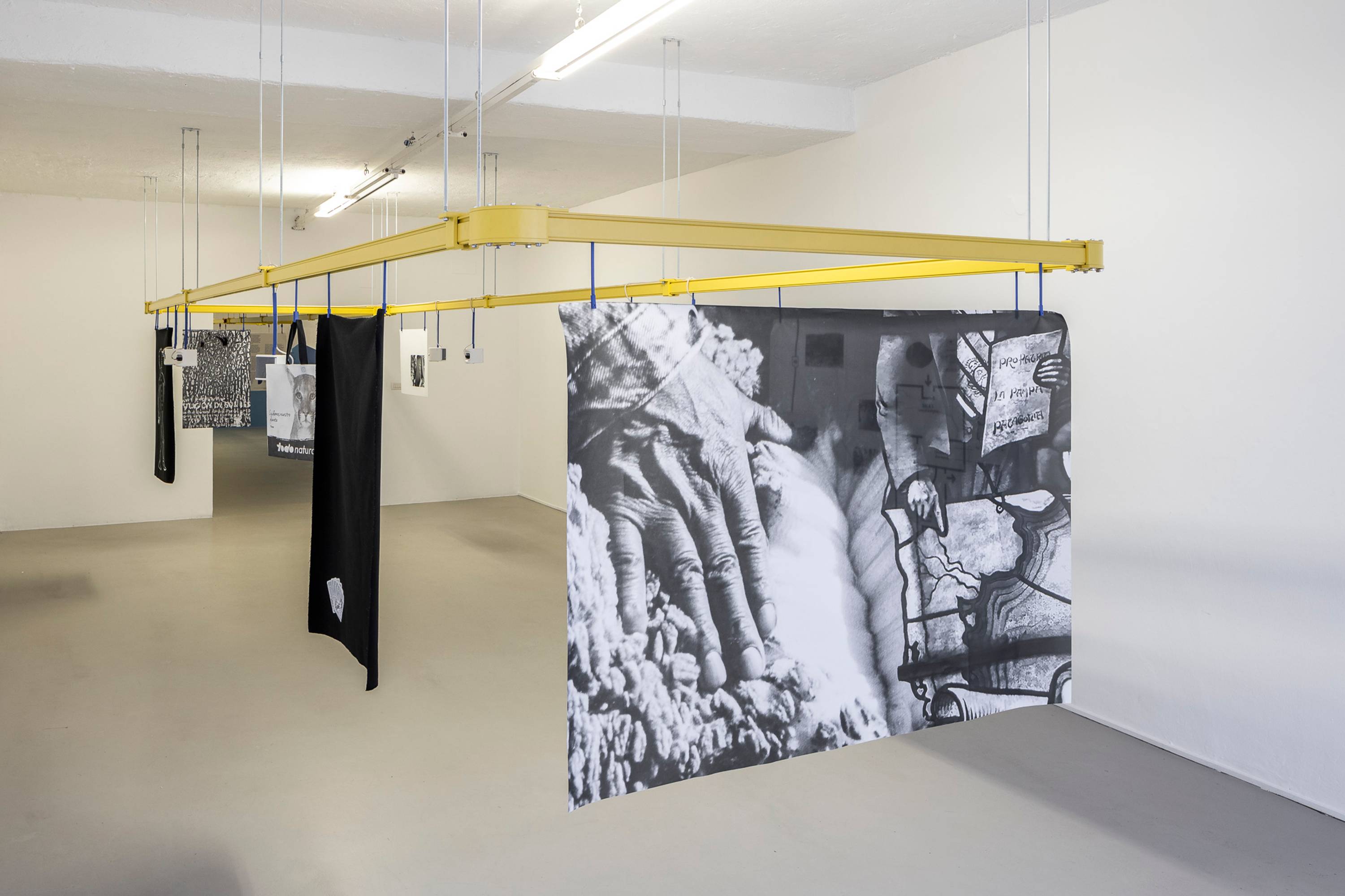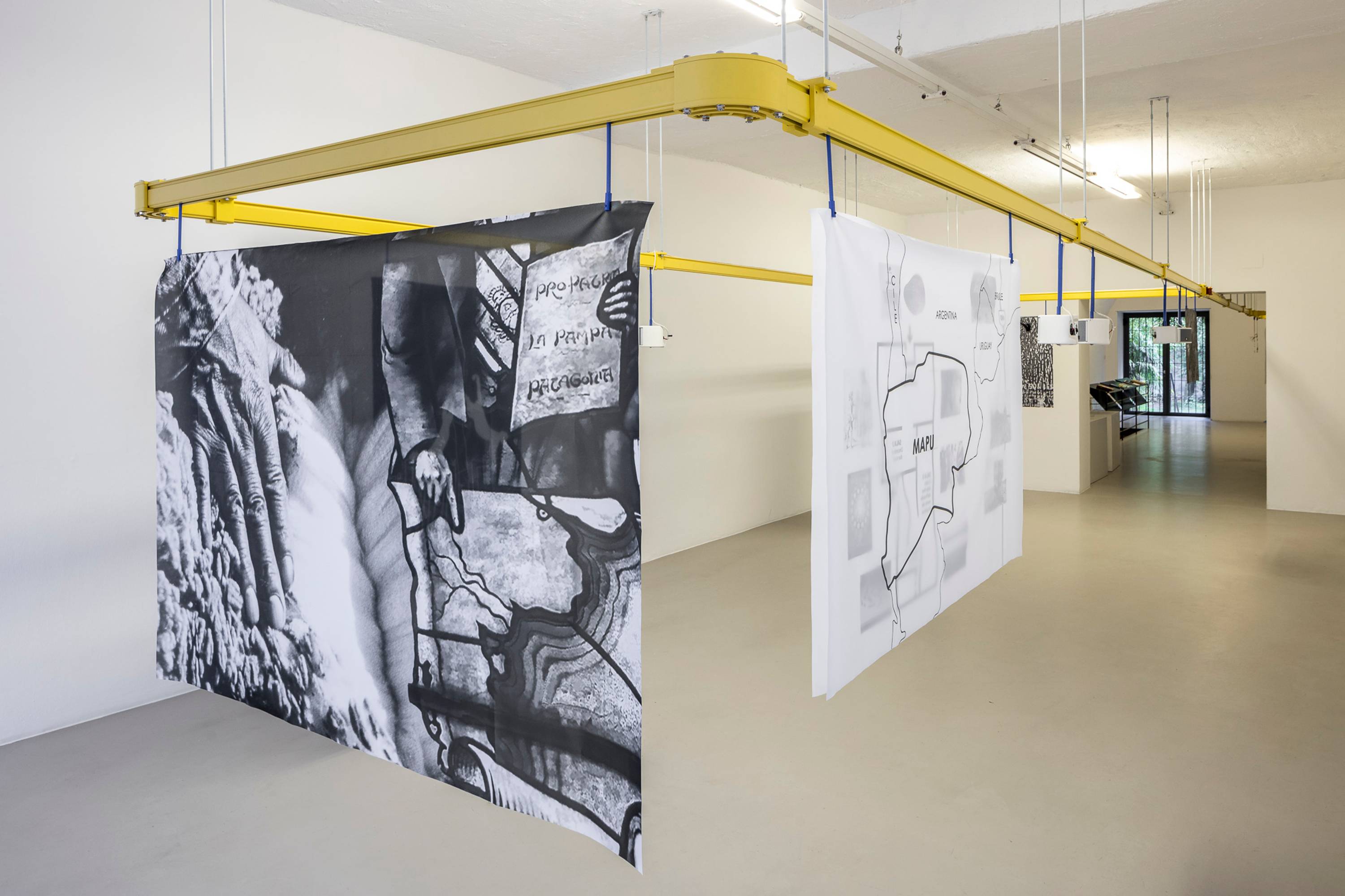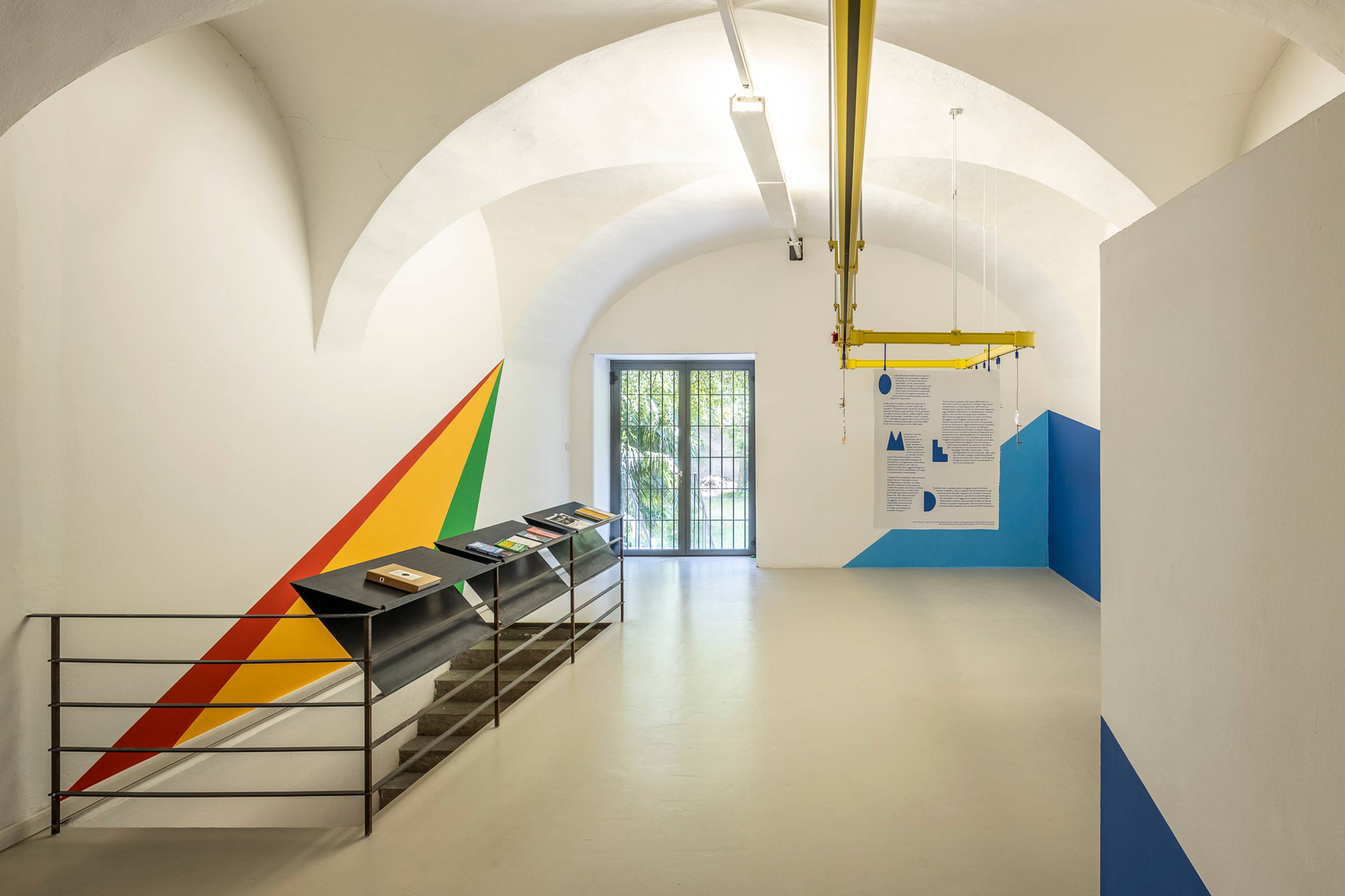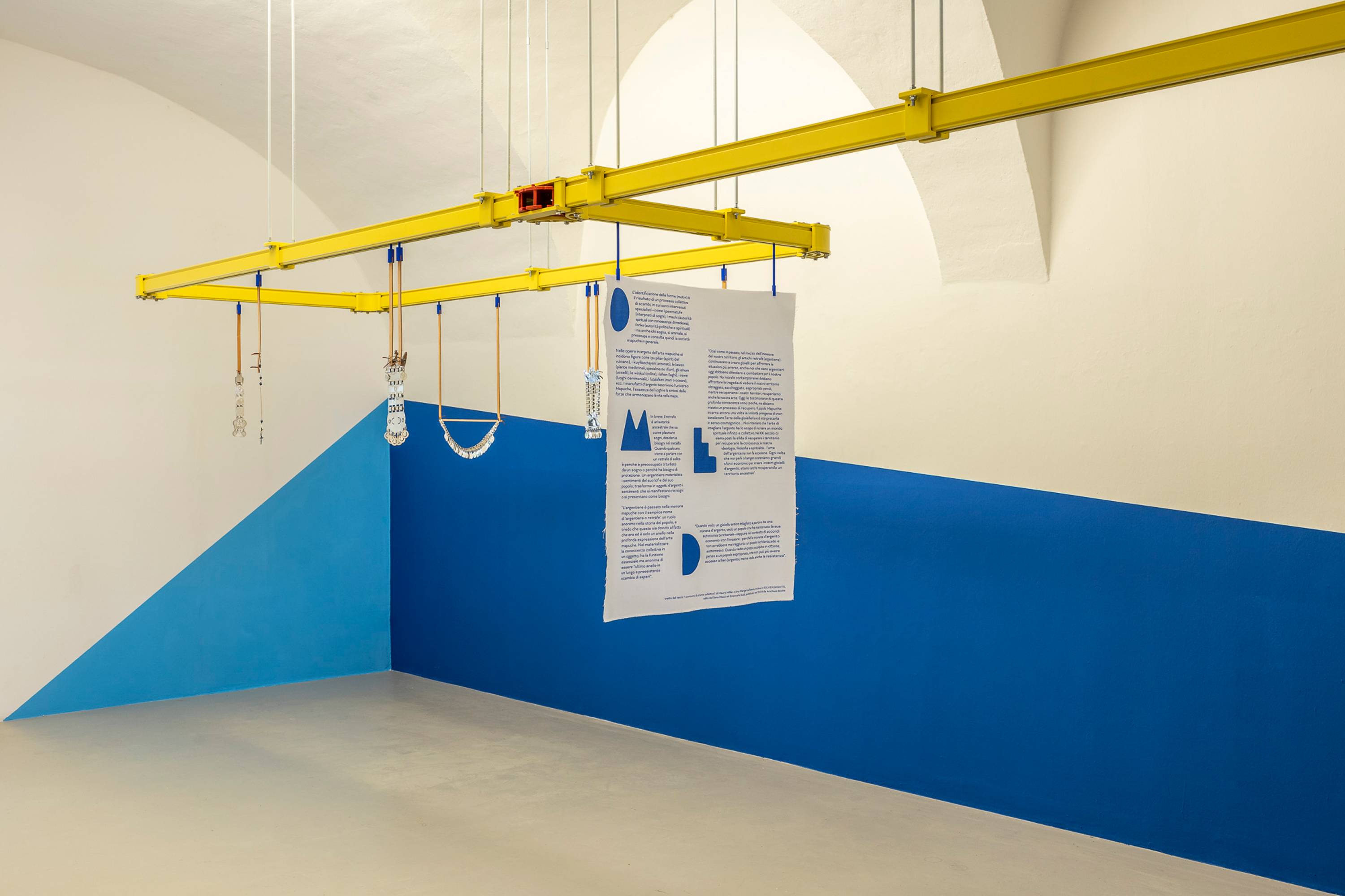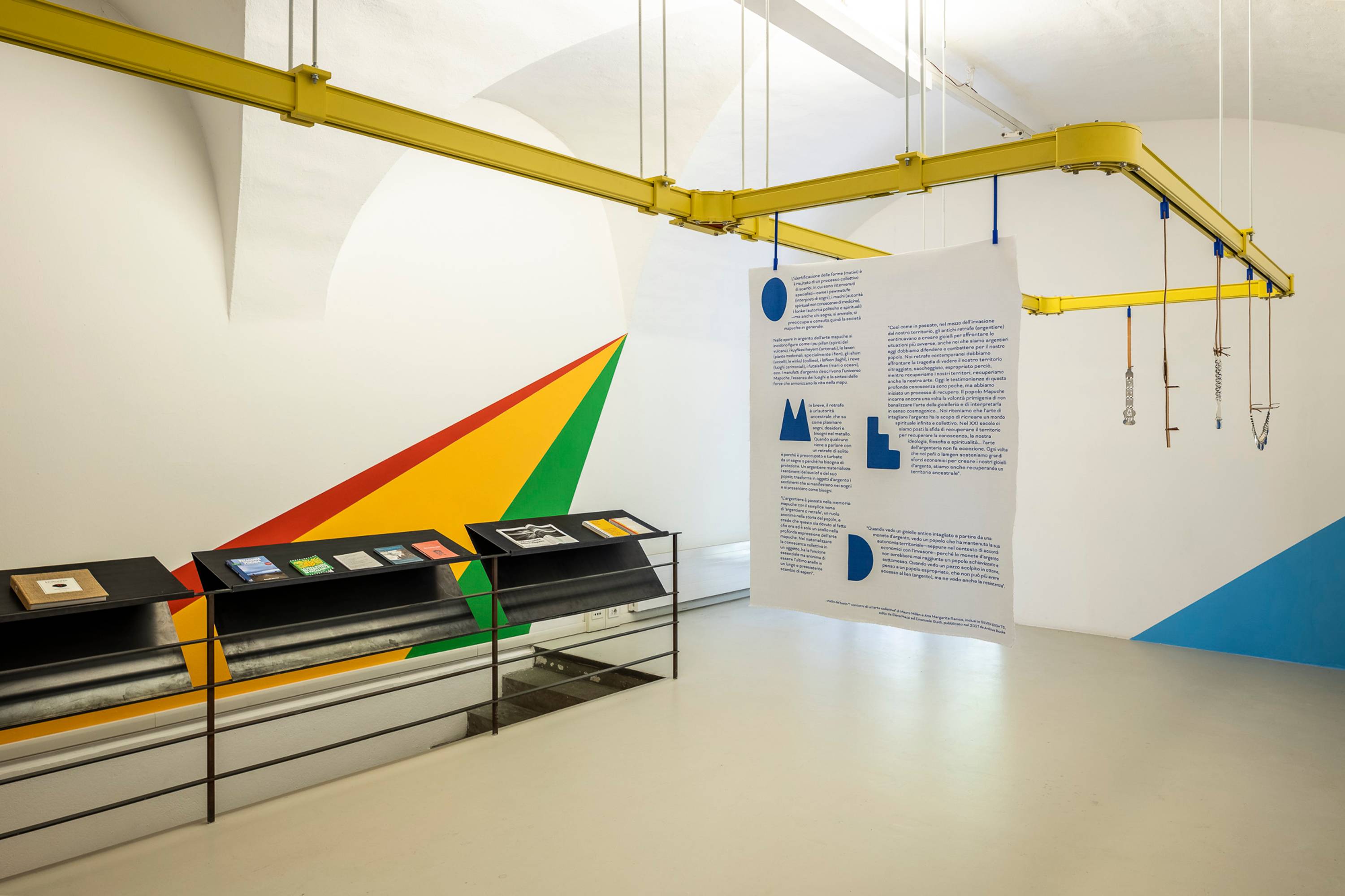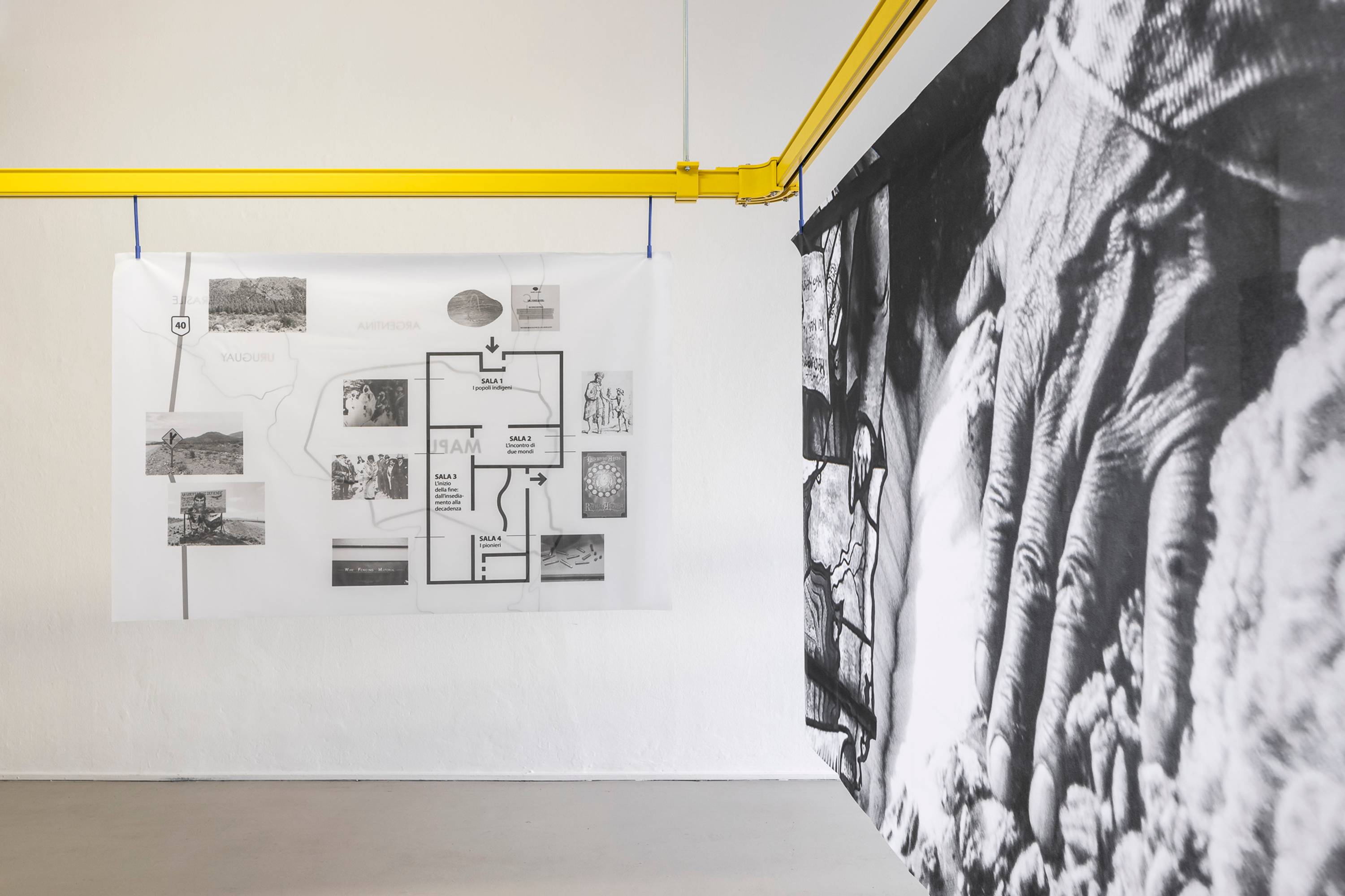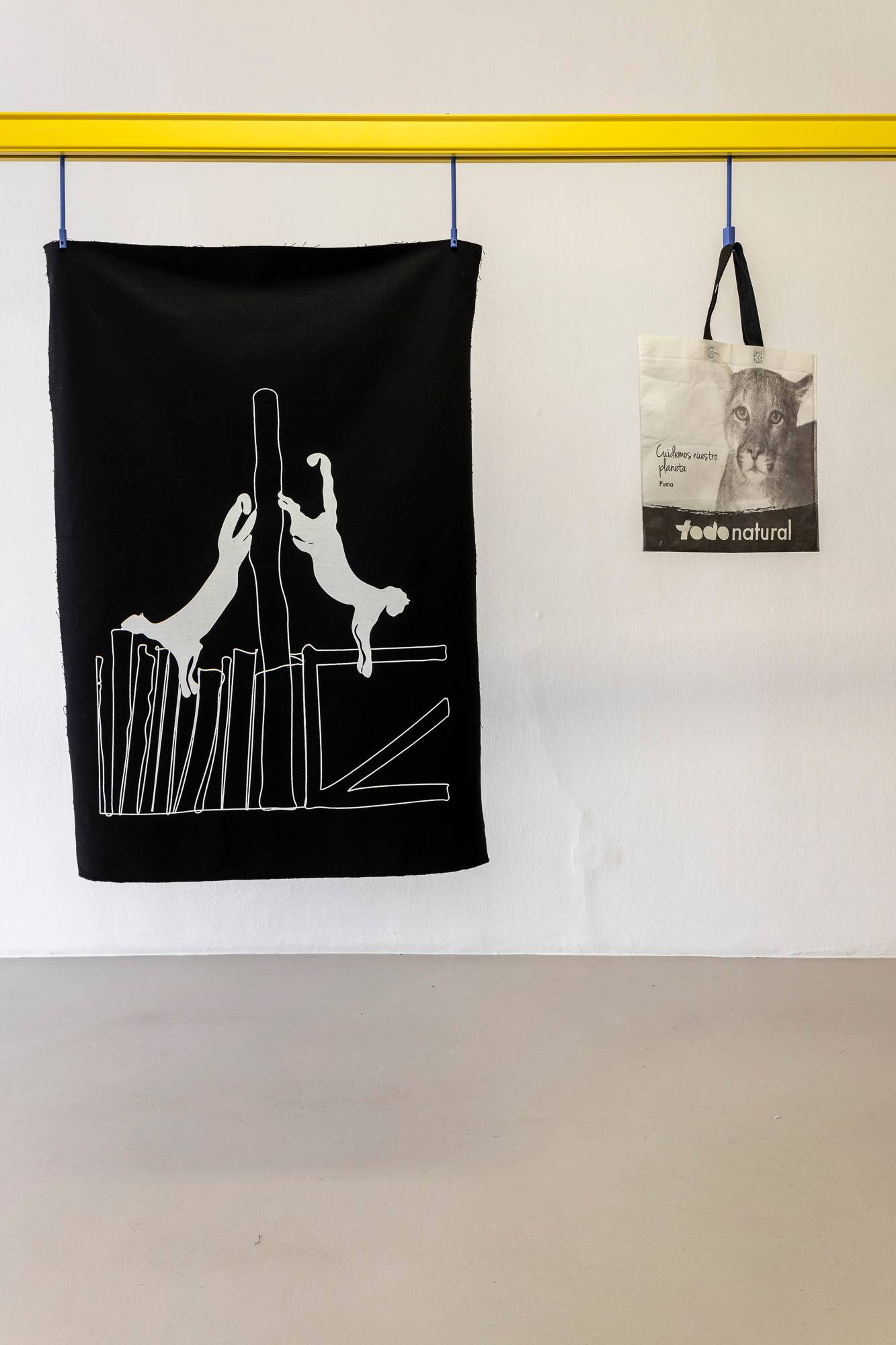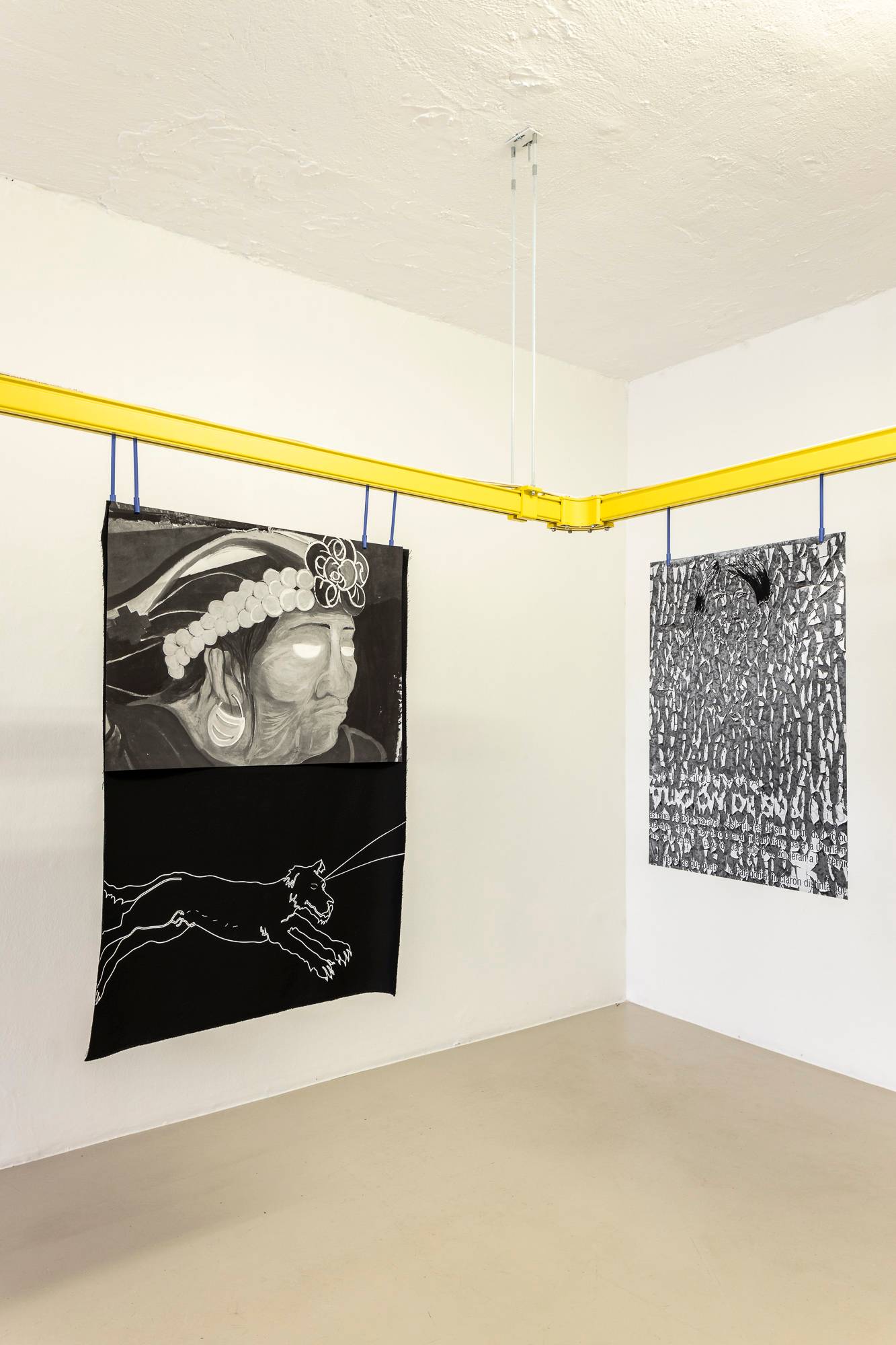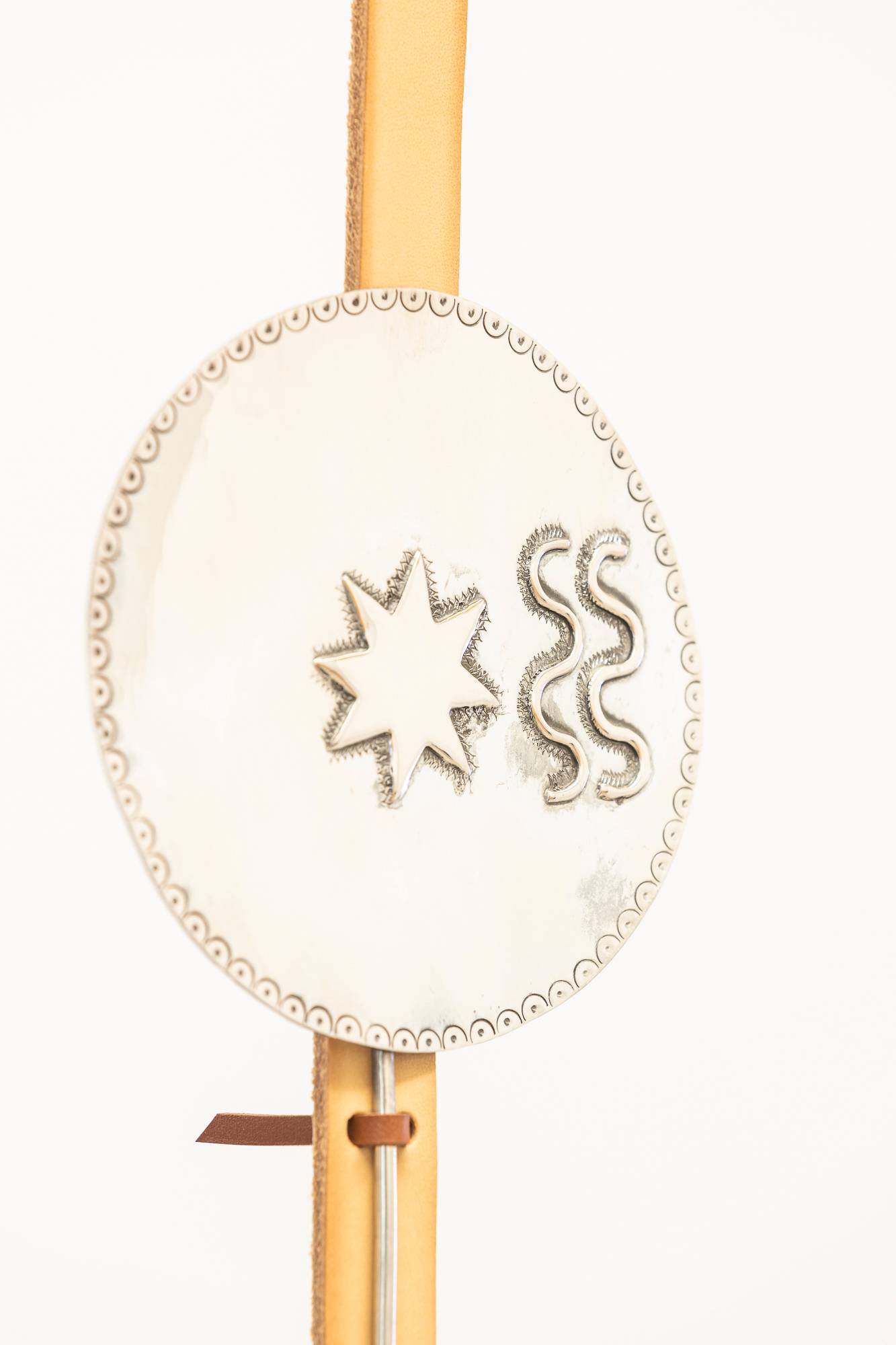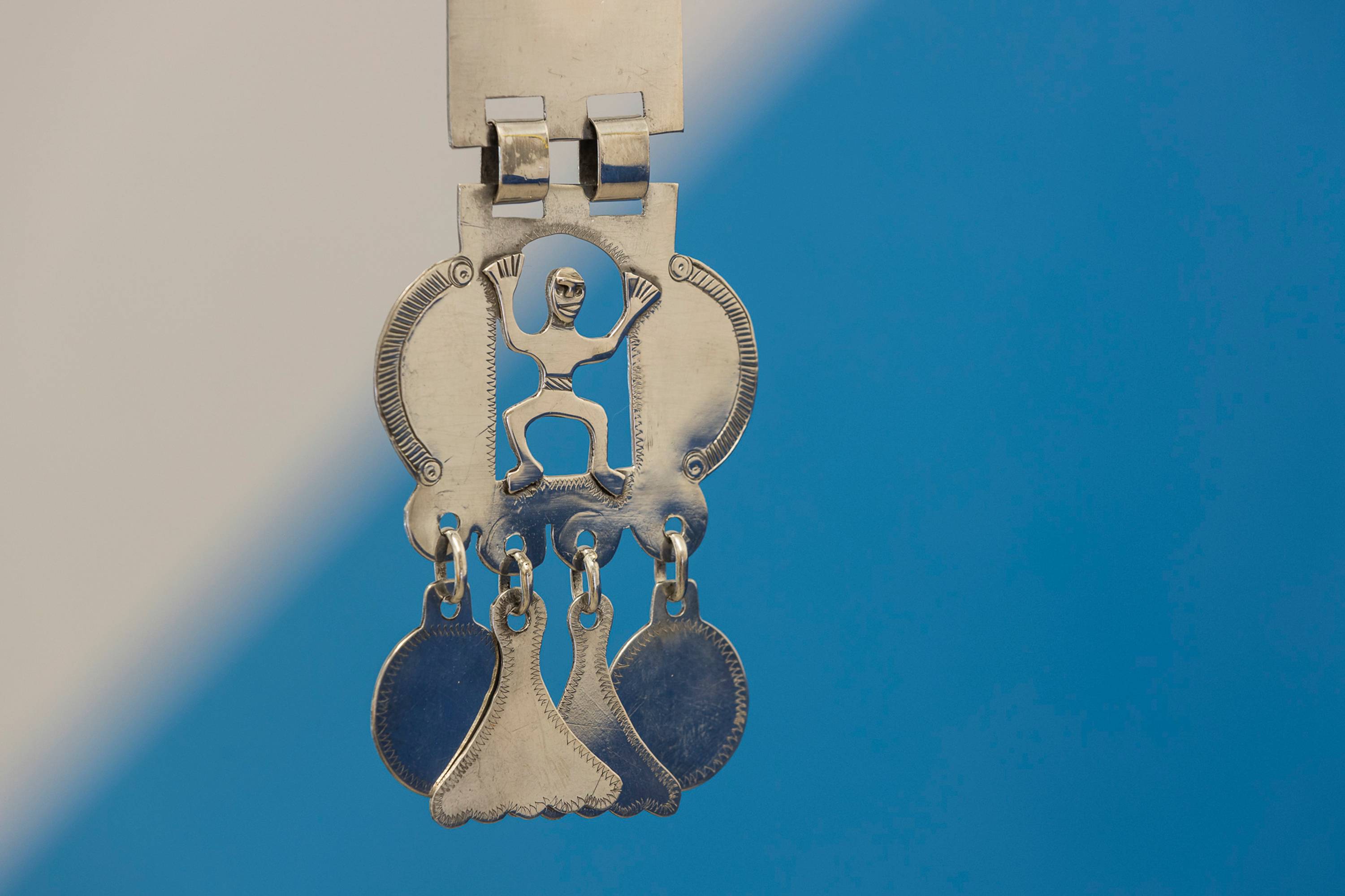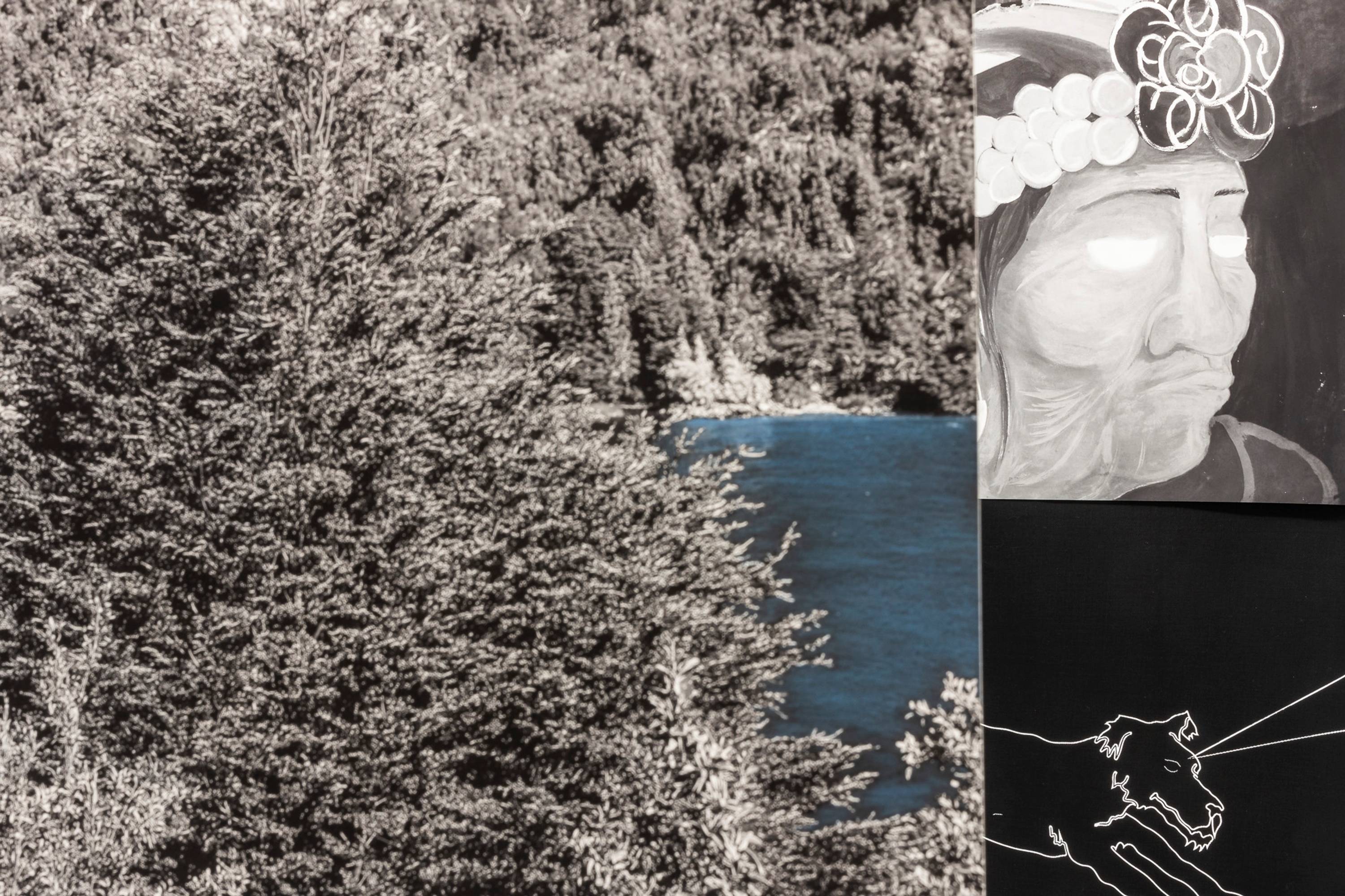Silver rights
A project by Elena Mazzi
In dialogue with Mauro Millán and Eduardo Molinari
Opening 11.06.2021
3 pm – 7 pm
Curated by Emanuele Guidi
“In the 21st century we have set for ourselves the
challenge of recovering the land to reclaim
our knowledge, our ideology, philosophy and spirituality…the art of silversmithing is no exception.”
Mauro Millán, Mapuche spiritual leader and silversmith of the Pillan Mahuiza community
ar/ge kunst presents Silver Rights by Elena Mazzi (Reggio Emilia, 1984), produced in dialogue with the Mapuche spiritual leader, silversmith and activist, Mauro Millán and Argentinean artist, Eduardo Molinari a project supported by the Italian Council (7th Edition, 2019).
The show at ar/ge kunst is the first exhibition phase arising from the artist’s in-depth research process in Patagonia, a region for years at the centre of the Mapuche struggles, claims and land recoveries.Silver Rights focuses on the ancestral bond between the communities and the land (mapu), a bond eroded and denied by colonising forces that have mutated over the centuries to gradually establish themselves in recent decades through neo-extractivist practices; a settlement process resulting from the convergence of investment policies and commercial agreements between South American governments and foreign multinationals, including the Italian Benetton.
More specifically, the works in the exhibition and the display itself respond to the narrative proposed by the Leleque Museum, an anthropological museum opened in 2000 in the very lands owned by Benetton; an ambiguous operation that dismisses the Mapuche people as an extinct culture rather than one that is alive and active in the disputed territory, ‘musealising’ their memory and material culture.
Elena Mazzi addresses this complexity by engaging in dialogue, supporting and expanding the dense network of relations that the Mapuche community has been consciously weaving for years; a way of understanding the art of diplomacy that, on the one hand, implies building and maintaining international relations between different political and cultural subjects, and, on the other, is implemented in their cosmovisions as a form of radical mediation between land, human and ‘more than human’ beings.
The central part of the exhibition consists of a series of silver jewellery pieces crafted by Mauro Millán and designed in collaboration with Elena Mazzi after a series of workshops on symbologies and current struggles, held with numerous members of the community. “The retrafe (silversmith) helps unite the collective and individual dimensions of the community, with the ultimate purpose of nourishing the collective,” writes Millán in his contribution to the book accompanying the project. He continues, “Mapuche silverwork is the synthesis of all collective needs and the tangible expression of a long and permanent conversation between the ancestors and the living in the Mapu.”
The jewels are preceded in the exhibition itinerary by an installation created by Elena Mazzi and Eduardo Molinari in which a precise composition of drawings and images on paper and fabric interacts with an audio sequence in four episodes.These four short stories were written collectively (with Enrica Camporesi) with a speculative approach interweaving documented facts, oral tradition and dreams, and the long history of violence perpetrated by historical figures such as General Julio Argentino Roca, which introduces the current struggle against expropriations and relocations as a result of the ambitions of “adventurous entrepreneurs” such as Carlo Benetton or Joe Lewis. The voices of the “Mountain”, as well as those of animal beings and spirits that belong to the Mapuche cosmology, reveal the disparity in the way these lands are occupied and the radical incomprehension behind certain choices, such as the establishment of the Leleque Museum itself.
It is an ‘act of exhibiting’―supported by the display designed by Alessandro Mason (Studio GISTO)—that aims to consciously react to the museological narrative of Leleque, and therefore places the jewels within a constellation of references and information that are essential to their public presentation. It is a device that represents an expression of care and respect for these artefacts, bearers of ancestral knowledge and spirituality, and that, at the same time, reveals the impact of international companies in Patagonia; massive privatisation of land rich in raw materials and resources (including water), the consequent displacement of indigenous communities and the progressive erosion of their civil, social and political rights.
Silver Rights is complemented by a book published by Archive Books (Berlin), edited by Elena Mazzi and Emanuele Guidi, with contributions from the association YaBasta! Êdî Bese!, Riccardo Bottazzo, Leandro Martínez Depietri, Emanuele Guidi, Elena Mazzi, Mauro Millán, Eduardo Molinari and Ana Ramos, designed by Archive Appendix.
The exhibition Silver Rights will be presented at Södertälje Konsthall (20.08 – 02.10.2021), Italian Institute of Culture of Buenos Aires and BIENALSUR (Autumn 2021). It will enter the collection of the Castello di Rivoli, Museum of Contemporary Art, Turin.
The project is supported by the Italian Council (7th Edition, 2019) program to promote Italian contemporary art in the world by the Directorate-General for Contemporary Creativity of the Italian Ministry of Culture.
Special thanks to all the partners who made the project possible: Mapuche community “Pillan Mahuiza”, Lago Rosario, Cushamen, YaBasta! Êdî Bese!, Italian Institute of Culture of Buenos Aires and Italian Institute of Culture of Stockholm, Contemporary Art Archipelago (CAA), Södertälje Konsthall, Castello di Rivoli Museo d’Arte Contemporanea and BIENALSUR, [N.A!] Project, Radio Papesse.
Biography
Elena Mazzi (Reggio Emilia, 1984) studied at the University of Siena and the Università Iuav di Venezia (IUAV) in Venice, after which she trained at the Royal Institute of Art (Kungliga Konsthögskolan) in Stockholm.
Starting from the examination of specific territories, in her works, she reinterprets the cultural and natural heritage of places, interweaving stories, facts and fantasies handed down by local communities in order to suggest possible resolutions to the man-nature-culture conflict. Her somewhat anthropological working method favours a holistic approach aimed at repairing the rifts that occur in society. She begins the work with observation and proceeds by combining various areas of knowledge.
Her works have been exhibited in solo and group exhibitions, including: Whitechapel Gallery in London, BOZAR in Brussels, Museo Novecento in Florence, MAGA in Gallarate, GAMeC in Bergamo, MAMbo in Bologna, AlbumArte in Rome, Art Sonje Center in Seoul, Palazzo Ducale in Urbino, Palazzo Fortuny in Venice, Fondazione Golinelli in Bologna, Center for Contemporary Art Luigi Pecci in Prato, The 16th Art Quadrennial in Rome, GAM in Turin, the 14th Istanbul Biennial, the 17th BJCEM Mediterranean Biennial, Fittja Pavilion during the 14th Venice Biennale of Architecture, COP17 in Durban, the Italian Cultural Institute in New York, Brussels, Stockholm, Johannesburg and Cape Town, and the Bevilacqua La Masa Foundation in Venice.
She attended different residency programs in Italy and abroad and is the winner, among others, of Cantica21, promoted by the Foreign Ministry and the Ministry of Culture, the XVII Ermanno Casoli Prize, the STEP Beyond Prize, the OnBoard Prize, the VISIO Young Talent Acquisition Prize, the Eneganart Prize, the Illy scholarship for UNIDEE, the Pistoletto Foundation, nctm e l’arte prize, the Sandretto Re Rebaudengo Foundation prize, and the Lerici Foundation prize.
